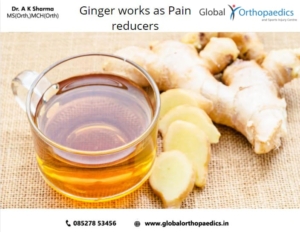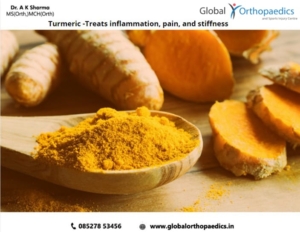Overview
Natural remedies are increasing in popularity for conditions like osteoarthritis. Some people think that they might be safer since they have lesser side effects compared with traditional medications.
But natural or herbal supplements can also have some side effects and can easily interact with medicines you might be taking at that time. Always be sure to buy these supplements from a reputable source.
Green tea: Anti-inflammatory beverage

Green tea contains polyphenols. These compounds may help you to reduce inflammation and the need for medications. One study in Arthritis Research and Therapy Trusted Source reported green tea increased cartilage protection and prevention.
Because of the risk of liver problems and side effects from concentrated amounts, green tea is best taken in moderation.
Ginger: Pain reducers

Oral ginger is also noted for reducing pain from osteoarthritis. According to a study about Osteoarthritis and Cartilage, ginger being taken for long-term may even decrease the risk for osteoarthritis-related disabilities. Due to the risk of side effects, the National Center for Complementary and Integrative Health Trusted Source recommends having ginger moderately as a spice instead of supplement forms.
The biggest drawback of overdosing ginger is it will reflect the withdrawal symptoms in you. Ginger can cause upset stomach, diarrhoea, and heartburn. It may also interact with prescription medications, like Warfarin, because it’s an anticoagulant (blood thinner).
Turmeric (curcumin): Treats inflammation, pain, and stiffness

Curcumin is the active compound in turmeric. It’s is part of the ginger family, but it can help osteoarthritis in different ways. Studies Trusted Source shows that the substance may fight inflammatory compounds. It can also help reduce pain and stiffness during an osteoarthritis flare-up.
For the treatment of arthritis, the Arthritis Foundation recommends the following dosage options:
- capsules: 400 to 600 milligrams up to three times per day
- powdered root extract: 0.5 to 1 gram, three times per day
If you are taking turmeric, you have to add black pepper to activate the herb’s benefits. While turmeric is generally safe, it can cause nausea and may interact with blood thinners.
Lifestyle changes
For more long-term relief, lifestyle changes are most effective.
- Regular exercise
- A healthy diet
- Stay active
- Eat osteoarthritis – friendly foods
- Maintain a healthy weight
- Weight maintenance
These above-mentioned activities would definitely help you improve joint health and their functioning. Over time, the muscles stabilize your joints so it will strengthen and protect against damage.
According to the Arthritis Foundation, each pound of body weight puts the equivalent of three to six pounds on joints. Weight loss can go a long way in alleviating joint pain and osteoarthritis prevention. This could also be helpful for people with osteoarthritis in their knees and hips, as these joints bear a lot of weight.
When to see your orthopedist
osteoarthritis is a chronic (lifelong) condition with no cure. Managing your condition and symptoms can actually go a long way in stopping further damage to your joints. Lifestyle changes and homemade and natural remedies can help you complement your treatment plan. They can even provide you with extra relief.
While such changes will actually help you to make a big difference, it’s also equally important to know when you need to see your orthopedist. You might end up making an appointment if it’s the case of a flare-up, if your symptoms get worse, or if your current treatment plan isn’t helping you out. Your orthopedist should check your joint pain and stiffness for potential damage and preventions.


